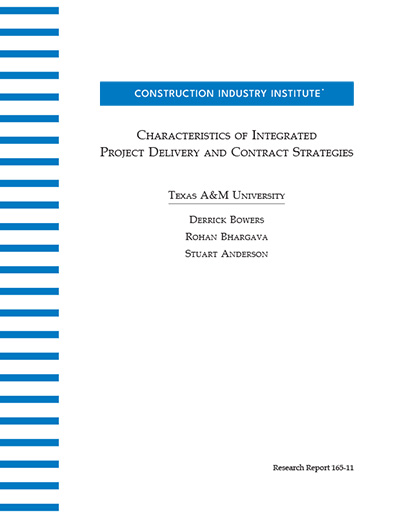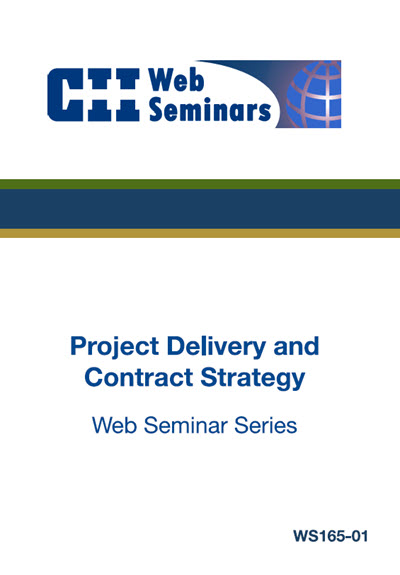
Characteristics of Integrated Project Delivery and Contract Strategies
Capital facility projects are executed through numerous design, procurement and construction tasks, often performed by different service providers. The way these tasks in a particular project are packaged for execution and the types of services that the owner retains for the execution of those tasks define the delivery system for that project. Complimentary to the delivery system is the contract strategy adopted for the project. The contract strategy defines how the owner pays for the services rendered by service providers in the execution of a particular project. This implicitly defines the allocation of financial risks between the owner and the service providers. In the owner’s management of capital facility projects, the project delivery system and contract strategy (PDCS) together provide the framework for organizing project execution.
In order to develop a framework to characterize PDCS options used in practice, input was sought from members of the Construction Industry Institute Research Team 165. Each research team member made a presentation that included their description of typical delivery approaches and contracting methods utilized by their organizations. These presentations were found to frequently include information on project phasing, project team relationships, and compensation approaches. These were determined to be the three defining elements of PDCS characterization, and were subsequently transformed into a framework that defines a set of PDCS options.
A list of 11 PDCS options was developed based on the three-element framework and tested for application through a mailed questionnaire. Each PDCS option was selected by at least one respondent. This list of PDCS options is more exhaustive than previous efforts because it includes many variations of some traditional and non-traditional approaches.
A list of project objectives was also tested for application through the mailed questionnaire. Using a relative index rating (RIR), the project objectives were prioritized. The results of this prioritization process produced some expected results. “Meet Cost” and “Meet Schedule” were consistently the top objectives for most every PDCS option. Individually, the PDCS options did show some variability in the prioritization of the objectives. This was expected because of the different types of projects that comprised the database.
A list of 26 selection factors was also validated. The RIR of the selection factors produced some interesting results. Similar to the project objective RIR, many PDCS options prioritized selection factors in similar fashions. The “Budget Critical” and “Schedule Critical” selection factors were shown to be important in the PDCS decision making among every PDCS option with the exception of options three and eight (one project response each). “Budget Critical” had a higher priority than “Schedule Critical” for those PDCS options that used sequential design and construction phasing. These two selection factors were frequently reversed in terms of priority when the design and construction phases overlapped, as “Schedule Critical” became the most important selection factor. Other selection factors generally fit the unique characteristics of each PDCS option.



